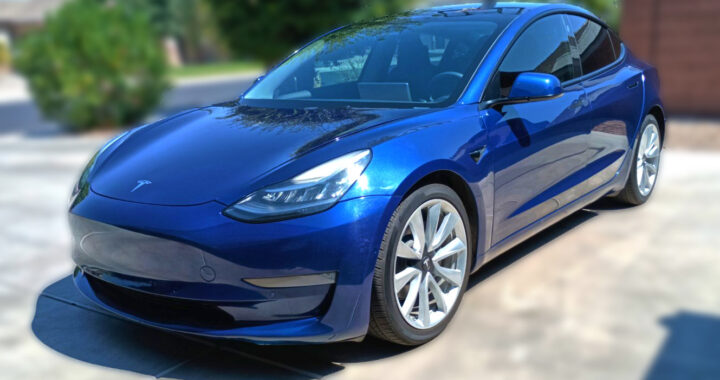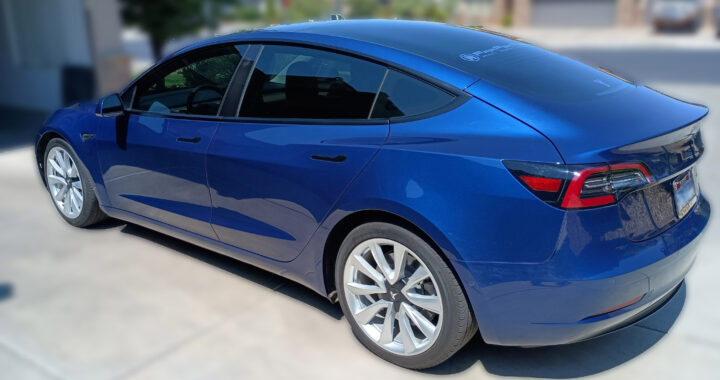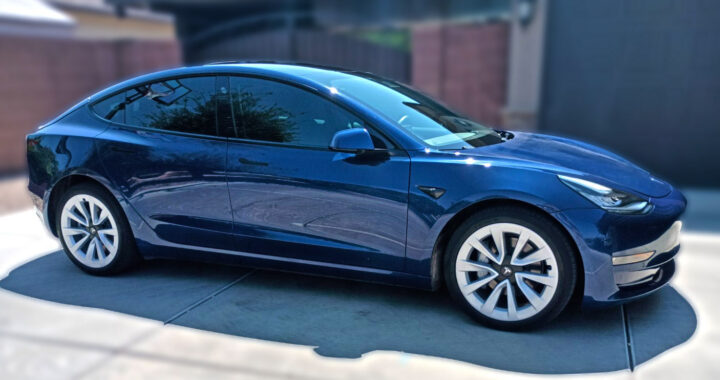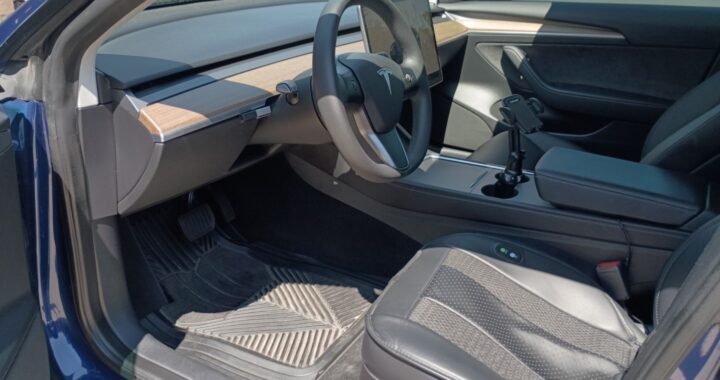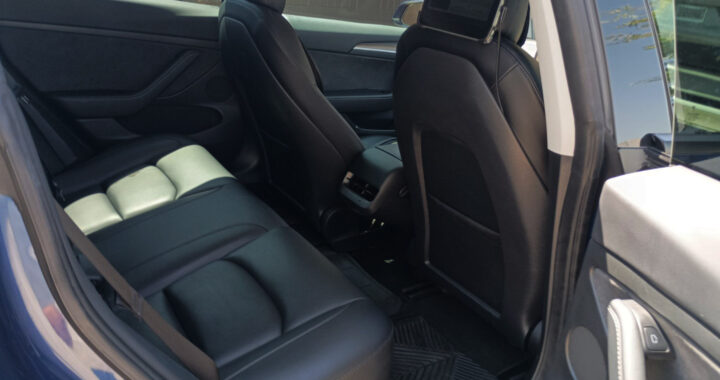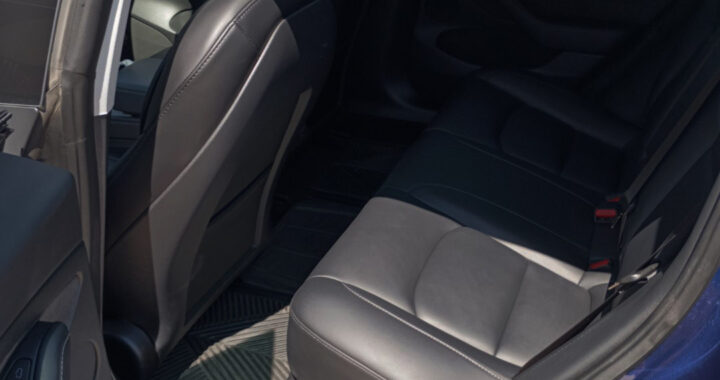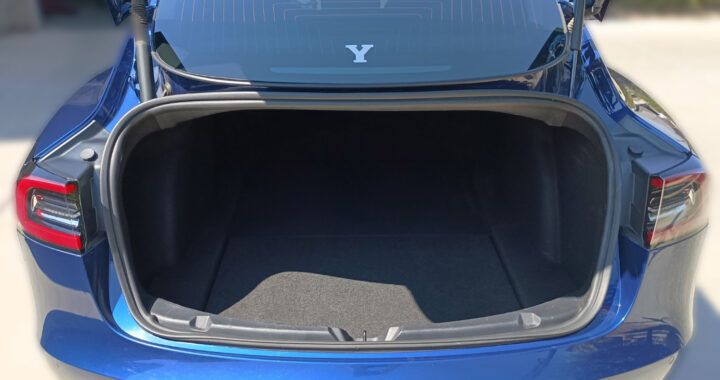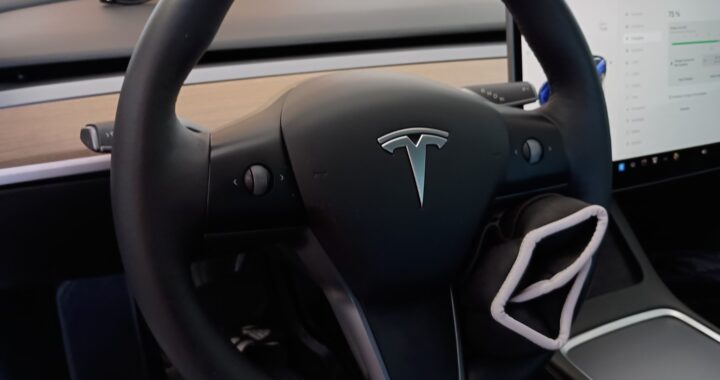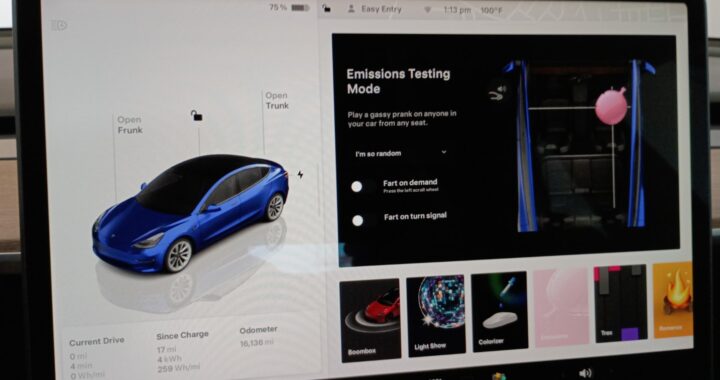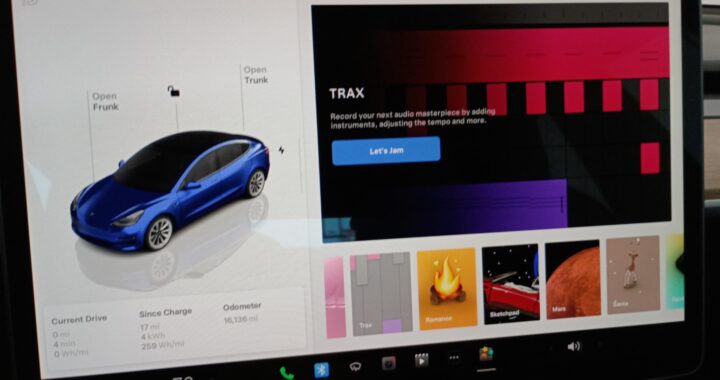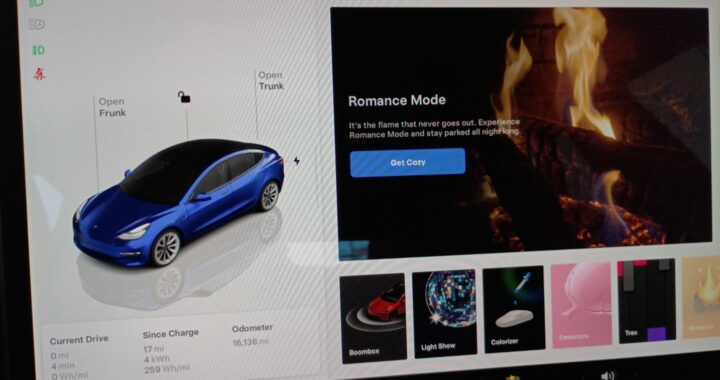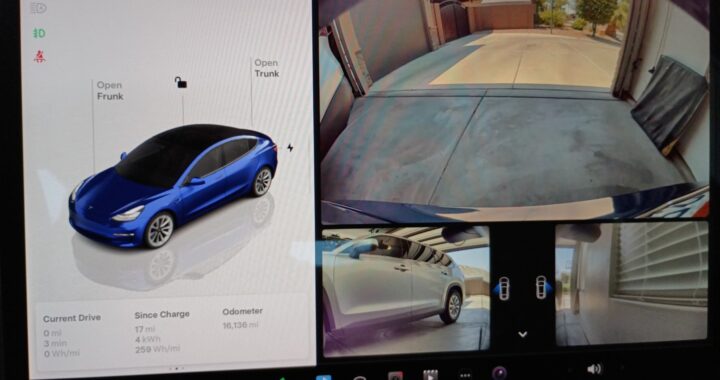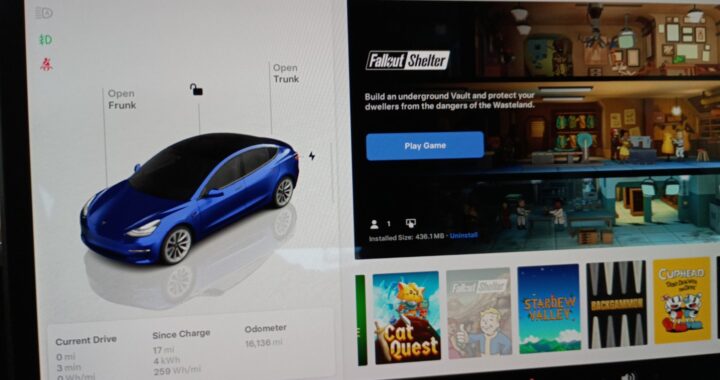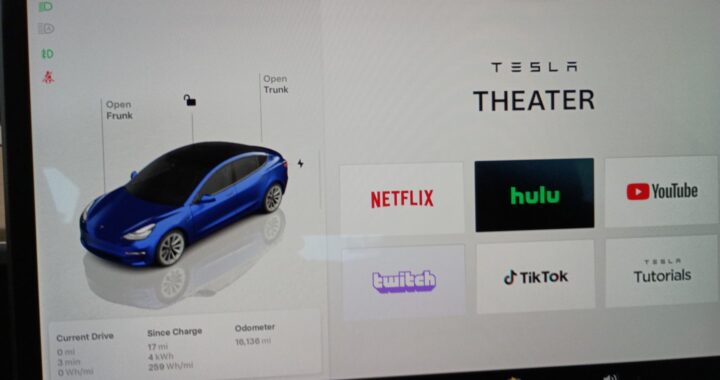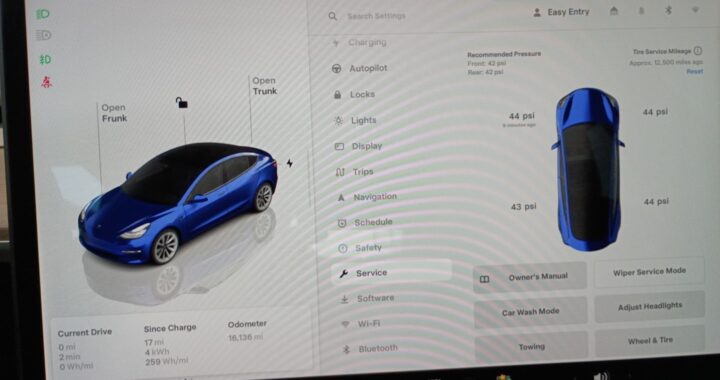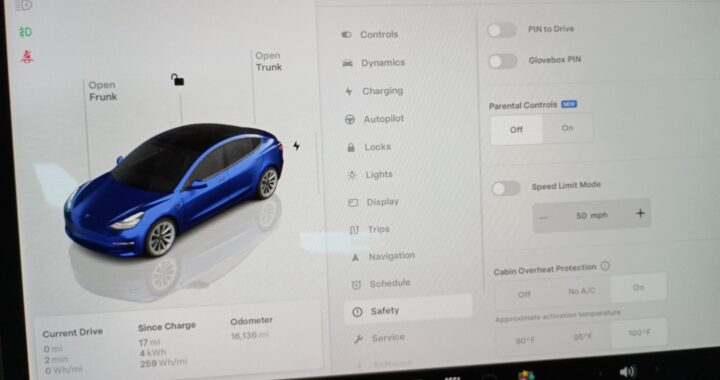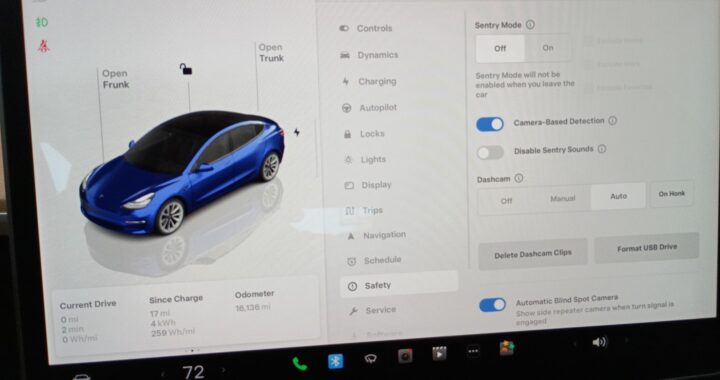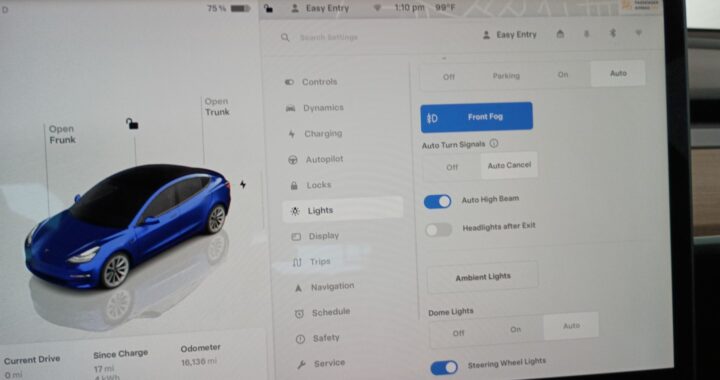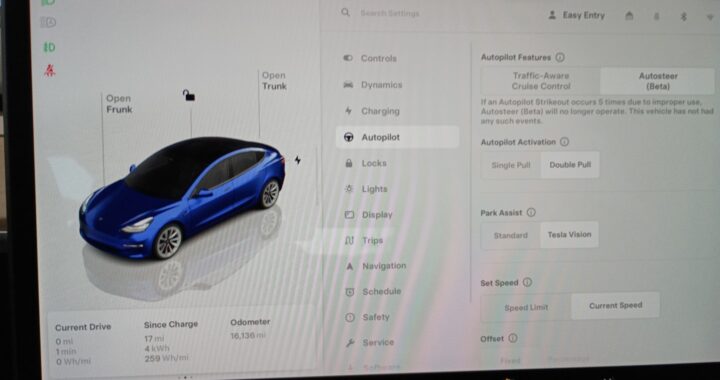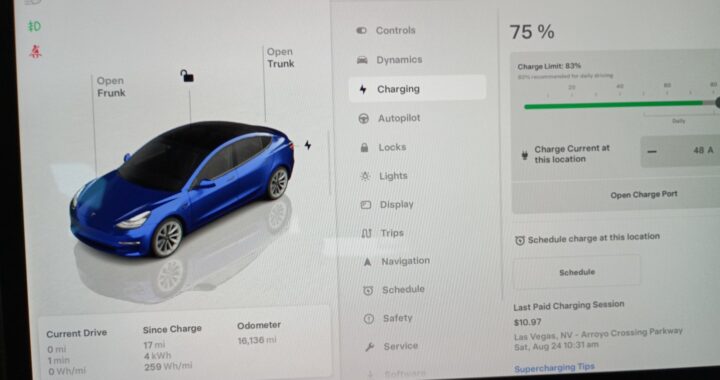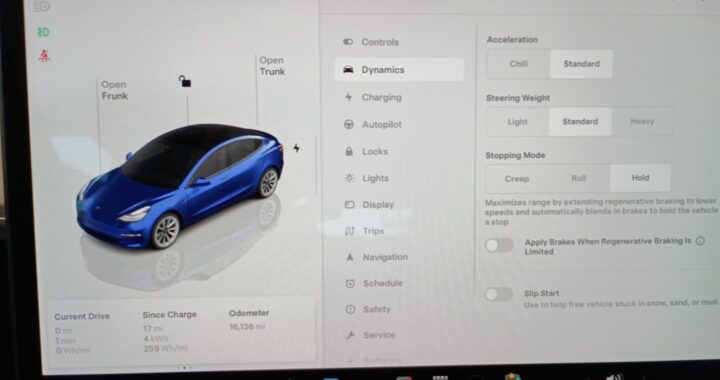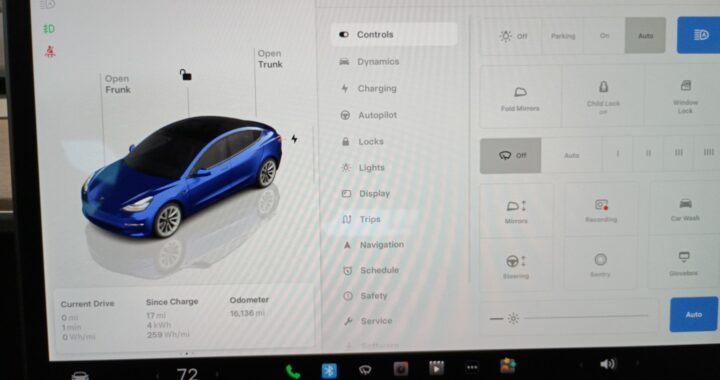TLDR VERSION:
We bought a 2022 Tesla Model 3 Long Range with 3K miles on it. There were surprises, good and bad. We would buy it again (for now) with some caveats. I would plan to always have one EV in the household from now on, but never as our only source of transportation as the technology and infrastructure stands today. EVs can be a good tool in fulfilling a niche need in transportation but are not currently a one-size-fits-all solution in my opinion.
LONG VERSION:
While I know there’s a lot of Tesla reviews out there, it seems like most are pretty biased particularly when it comes to a company as polarizing as Tesla. Before finally buying a Tesla a few months ago (May 2024), I did a lot of research and found that most reviewers fall into one of two categories. 1. They HATE electric cars and/or hate Elon Musk or 2. They LOVE electric cars and/or LOVE Elon Musk and maybe are even invested in Tesla stock. While I admire anyone who has accomplished what Elon has, I can assure you that plays no part in my review as you will see. Also, my bias prior to buying an electric car was definitely toward ICE (internal combustion engine) cars. I grew up loving cars, dreamed of owning a big 4×4 truck and then a Ferrari and many other more traditional vehicles. I love the way they look, I love the way they sound and in short, I’m a “car guy” and car guys aren’t supposed to like electric cars.
BACKGROUND:
In our family, I’ve always been the one to choose the vehicles, and we’ve had a few. Just prior to this Tesla model 3 long range, I owned a Ferrari, a Bentley, a couple Toyotas, a Honda and a Nissan. That may seem like an odd mix, but each vehicle had a purpose, even if it wasn’t a very legitimate one. The Nissan’s purpose was to be a cheap car to rent out and then to drive for rideshare purposes. Yes, I had some exotic cars and am an Uber driver. I happen to think it’s fun, but that’s another story. The Nissan was cheap and averaged about 36 mpg, but I had learned long ago not to trust Nissans too much so I decided to sell it while it still had low mileage. My wife made it pretty clear that since I had chosen all of the other cars during our marriage, it was her turn and she wanted a newer Tesla Model 3 in her favorite sports team’s color (blue) with the “good” wheels. Having just bought two new Toyotas, I really quite wanted to add a third in the form of a Corolla hybrid, but the wife was unconvinced. After owning a number of makes (Dodge, Volvo, Lexus, Nissan, Chevy, Acura, Infiniti, Toyota, BMW, Mercedes, Honda, Ferrari, Bentley) and also nearly every common class of vehicle (sedan, coupe, convertible, truck, SUV, SXS, ATV, motorcycle, exotic, hybrid and even a backhoe and riding mower), it did seem like it was time to make my wife happy, spend the extra money and try an electric car out. I had read many things about Teslas prior to buying one. I had heard of common quality control issues particularly with Model S and Model X. Apparently there were common problems with taillight failure as well as problems with door hinges and handles and basic fit and finish issues with interior, doors, windows etc. I had also heard that while under warranty, Tesla was generally really good about fixing these problems and even had mobile techs they would send around to customers’ homes. It sounded like a lot of quality problems had been solved with the introduction of the Model 3 and Model Y and that they had a new architecture, more reliable mechanisms and were simply less mechanically complex, more technologically advanced and less expensive to fix if something did go wrong. So, for reasons of cost, performance and range, we settled on a 2022 Model 3 Long Range with only 3,700 miles on it, a squeaky-clean Carfax and supposedly under full warranty. We didn’t feel the need to do a ton of due diligence on the car because we were buying it from a huge, reputable dealer and course because it was practically new and drove really well as one would expect, plus even if there were problems, they would certainly be under factory warranty anyway. We bought the car for what seemed like a bit on the better side of a fair price and my wife excitedly drove it home the 100 or so miles from Las Vegas to our home.
INITIAL IMPRESSIONS AND GENERAL DRIVING EXPERIENCE:
Probably the first thing you notice upon attempting to enter the car is that for some reason the engineering powers that be decided it would be a good idea to confuse every single person who attempts to open the door by turning an intuitive one step process of pulling the door handle and continuing to pull to open the door into the two-step process of pushing one end of a flush handle and then pulling the opposite side. This two step process is often turned into an infinite step process when people can’t ever figure it out and instead fumble around rubbing their hands all over your car in the general area. As a rideshare driver I can attest that a full 50% of riders require me to reach over and open the door for them from the inside and even let them out by reaching over their lap which can be a little awkward. Entry and exit is easy enough when you know the simple trick, but it is a trick… and most people are probably not as smart as the average bear at your favorite national park. Beyond the door handles, the windows in a Model 3 are all frameless which has never been a favorite feature of mine. The windows must roll down slightly to open and close and then roll up. This puts extra cycles on the motors and exposes the glass to extra hazards and stresses as people lean on it, push against it to close and open the door all the way and even bash it into things by swinging the door open into things. In fact, we noticed that the drivers side door in our practically-new car had already been replaced at least once!
Once you get in the car, the differences become even more clear. This car is pretty small which can be good and bad. The good is that it’s nimble and fun to drive. The front seats go back far enough to accommodate a 6’3’’+ person just fine, but if you are a fatty, this isn’t the car for you. It is snug for even someone of fairly average girth (32” waist). Also, if the front seats are back far enough for tall front occupants, the rear will be quite cramped. It is doable, but it is far from ideal. The seats are pretty comfortable and very supportive. It was a huge upgrade in comfort from the Sentra I had before. The seats in our particular example are not ventilated however, and they get HOT…. like I’ve never had a sweatier back from driving. I had to buy a ventilated pad just to get through the summer. Passengers have mentioned it too. Other items of note on the interior is that things seem to be pretty well built, but look and feel pretty cheap by modern standards. I would give the interior build quality an 8 out of 10 because things feel solid and there are very few rattles and the ones that are there were easy to eliminate. In the luxury department, I’d give it a 6 out of 10 by modern standards and that’s probably fair as this was meant to be the economy(ish) model. Many passengers will complement the “very nice car”, but I suspect standards may be lower for some than others. Also, I think many don’t realize just how affordable Teslas have become. Our Model 3 also has heated seats, a heated steering wheel and other minor luxuries, but overall, the plastic and other choices just feel a bit chintzy. Beyond typical car items, Teslas in general have many gimmicky types of things that are fun and novel. Tesla cars have been compared to large, driving smartphones and indeed they have many apps which have varying degrees of usefulness. The large center screen has all the typical Bluetooth connectivity and allows access to a sound system that I would have to give a 9 out of 10 in the long range version at least. I think it sounds pretty fantastic for a stock system. It also has a “Theater” app which allows you to watch all the major streaming services directly if you have an internet connection which can be supplied through a “premium connectivity” service that you can activate for about 8-10 bucks a month and offers other features or through a hotspot on your phone. Of course, the car must be parked to watch movies, but I use the feature frequently. If the included apps aren’t enough, you can also access any other streaming service or anything else for that matter through the included browser. The screen also gives you access to the myriad of cameras on the car through the “camera” app and the recorder which you can enable or disable as you please through the “dashcam” app to allow playback of any event in or out of the car. Of course there is Navigation, multiple podcast and music apps, an app to track energy consumption and various other pretty standard things, but a few things are glaringly absent – especially for a giant rolling computer: THERE IS NO APPLE CAR PLAY or ANDROID AUTO at all. Also, just to open your garage through the car requires a subscription as far as I can tell. I use one of those old school remotes and use my phone for navigation most of the time. This seems absolutely crazy. Explanations as to why Car Play and Android Auto are missing are as lame as the fact that it doesn’t exist to begin with. One app that’s pretty fun even if it’s only available with the “premium connectivity package” is the “Caraoke” app. It is exactly what it sounds like and is fun for little road trips. It is possible to stream from a USB flash drive, but in our particular car it only works from the slot inside the glove box which is the slot for recording camera footage. Special steps have to be taken to reformat the drive and partition it so that part can be used for music etc. and the rest for camera footage. There are other slots in the forward center storage compartment, but in this year’s model (2022) they apparently made it so you couldn’t stream from there. You gotta love when they remove features in newer models. The supreme gimmick is the “Toybox” app and it is also the crowd pleaser…especially among children or overgrown children. It is full of items which allow you to play video games using the actual steering wheel as a controller, make fart noises in specific seats or even externally on demand, replace the horn noise with any number of funny sounds, put on a light/music show with the car “dancing” to the beat with lights, windows, trunk, mirrors etc all joining in the choreography. There are many, many fun, creative options in there and kids of all ages love it and I like that those whimsical, human type things made it through to production personally. It proves that cars and engineers don’t have to be just boring tools.
There are a lot of things to unpack on the interior, but some of them pertain to the overall driving experience as well. Regarding the driving experience: By the time my wife got it the hundred or so miles home from the dealer several things became clear. Teslas are VERY different to drive than any other car. First, they are VERY fast in the dual motor configuration at least. Our car has the sport wheels to go along with that speed and the ride is quite stiff/sporty. This is great for winding, well-paved roads but not so great for bumps. Also of note is that EVs are very quiet which is a nice change most of the time. A loud internal combustion engine definitely appeals to the boy inside of every man and appeals to plenty of women as well, but there is something about the sheer acceleration and stealth nature of a fast electric car which is appealing in its own way. Also, when the motors are winding up they actually make a pretty cool rocket-ship type sound which can’t be compared to the roar or scream of an 8 or 12 cylinder beast, but is certainly better than nothing. While motor noise is almost nonexistent, what seems extra-present is the sound of the tires. In an ICE car, you never really notice the sound of tires over the drone of the engine, but when there is no engine noise to speak of, it seems like the tires are ridiculously loud. Beyond noise, electric cars have other unique idiosyncrasies and features and it takes several days or weeks of driving to get used to all of them. One of the most noticeable differences is the one-pedal nature of a regenerative braking system. Basically, when you let off the accelerator, it feels more like pretty aggressive braking than just normal coasting to a stop. You have to let off the accelerator MUCH later than you do in a traditional car. You can turn that feature off, but then you lose the efficiency and waste the technology of the regenerative braking, so it’s best to just get used to it. Also, it wasn’t exactly intuitive how to use the cruise control, navigation or pretty much anything you typically use in a traditional car. Every car I’ve ever had has had many dedicated buttons for most of the features. Not so in a Tesla. On the Model 3 at least, there are the following physical buttons and switches for the driver: Two buttons on the steering wheel, One button on each stem (wipers and park) three switches on the driver’s seat, four window switches, one button to open the door and that’s about it. Also, there’s no dash lights or display directly in front of the driver at all. For the first while it was pretty disconcerting at night to have NO lights or information immediately in front of you on the dash. Nearly every feature and bit of information is contained on screen in the center. It even controls what the buttons do on the steering wheel, meaning those scrolling wheel buttons could do different things on different cars depending on how the owner set them up. In a traditional car, many functions which would normally be a very intuitive one-step process one could figure out in most any other car, such as adjusting the side mirrors becomes a multi-click process on the screen…. and one must look at the screen pretty intently to drill down to the correct screen to make such changes. As the central screen controls practically everything, this is true of nearly every function. Whereas on a traditional vehicle, I can reach blindly for a knob or button to adjust the climate control, vent direction, fan speed, mirrors, steering wheel tilt/telescope and many other functions, on a Tesla it may be a two or three step process which requires you to look at the screen because there is nothing uniquely tactile. It’s just one big, smooth screen. This can be problematic if you recline your seat significantly and wish to quickly adjust a mirror and the steering wheel to suit. It is so difficult, that you really think twice about bothering with it at all. Another pretty noticeable difference is the way the climate control operates. Because the architecture is completely different due to lack of the traditional combustion engine, heat exchanger and pulleys and belts to run the AC, the sounds of the system are very unique….and weird. The system makes strange buzzing and popping sounds occasionally. You get used to it, but it seems pretty unrefined to be honest. Also, for the first several minutes after turning the AC on, it usually smells BADLY like stinky feet. You quickly get in the habit of rolling all the windows down upon entry while the AC purges itself of whatever that is. I’ve read that there’s things you can do to possibly minimize the smell, but nothing to actually eliminate it so I haven’t even bothered trying. Also, apparently unlike every other car, the cabin filter is NOT in the glove box (which requires several screen clicks to open) or any other easy to access location. To change something as simple as the cabin air filter requires a pretty ridiculous amount of disassembly around the left side of the passenger foot well. This seems pretty poorly thought out and it’s quite embarrassing to explain that the smell of athletes foot is just “normal” for a Tesla, and definitely isn’t your feet. The climate control does work well at heating and cooling the cabin even under extreme conditions. Amazingly, it doesn’t consume as much power as I thought it might either. There is a screen you can bring up which tells you exactly how much power each item takes and AC usually consumes between 4-10% of the power depending on how hot it is. Given how power intensive AC is known to be I actually was pleasantly surprised to lose so little range to stay perfectly comfortable. The heater seems to use even less power than the AC in my experience. There are a few other things about the driving experience that I would note (admittedly as somewhat of an afterthought). One is the strange way in which the AWD system works. I’ve owned many AWD vehicles, but none has ever lurched and jumped when encountering uneven road conditions like when you take a bad entryway at an angle. Something in the programming or mechanics of the system make the car lurch pretty violently if you get one or more wheels off the ground a little. When you get used to it, you learn to take things VERY slow and very much more at an angle to avoid whatever causes this strange and unique behavior. I assume this is a product of their unique AWD system and suspect it wouldn’t happen in a RWD Tesla, but that is just a theory. Another odd thing is the way the autopilot/cruise control works. Admittedly, there are many, many settings and I imagine that some of these systems could be fine-tuned or turned off, but with the settings on the autopilot set to a standard configuration, there are some problems. Whether using the more traditional cruise setting or the autopilot (lane-keeping/self –driving) option, the system can become easily confused by a vehicle turning left in front of you way off in the distance or making even a gradual lane change. Very often my car will practically slam on the brakes thinking that a collision is imminent. This requires quickly intervening to turn off the cruise control and apply throttle again to keep from being rear-ended. It is REALLY annoying and potentially dangerous. It doesn’t happen all the time, but almost every day it will happen to some degree. You’re going along just fine and then all of a sudden the brakes are being automatically slammed on for no good reason. Although I don’t pay for the “Full Self Drive” (FSD) feature, we did experience it in our loaner. Our car has that capability, but after using it, I don’t think I’ll ever opt for it. At time of writing is is $100 per month or $8,000 up-front to enable this feature. When using FSD, you enter an address in the navigation and set it off in FSD mode. The car will drive fully autonomously but will require you to let know you’re awake by nudging the steering wheel once in a while. Sometimes your input on FSD or autopilot isn’t to the system’s liking and it will actually beep at you and even threaten you with disabling the system entirely if it doesn’t like how you’re holding the steering wheel. I’m sure this heavy-handed response is something dictated by lawyers and litigation, but it is really annoying. Nagging is minimized with FSD enabled, but it is still there. Also, with FSD in use, we noticed lane changes were really aggressive in traffic, like to the point it felt like we were cutting people off all the time. No doubt the cameras and computer know exactly how much room you have and can exactly match speeds to make perfect, tight lane changes, but I’m sure other drivers don’t know that and just assume you are a jerk. Conversely, the system seems way to cautious when making right turns on red lights or at stop signs or left turns in the absence of a green arrow. It felt like we were waiting an eternity in heavy Las Vegas traffic for right and left turns with traffic piling up behind us.
RANGE:
Our model happens to be called a Model 3 “Long Range”. It’s my understanding that this means it has dual motors (AWD and fast) and greater battery capacity. There are many naming conventions for different model 3 versions, but I believe at the time, there was the Standard, Long Range, and Performance. Of the bunch, the Long Range model had the greatest range by far (358 miles stated). Standard range had a range of 272 and performance, 315. The Long Range was priced in the middle, had the amazing performance you would expect from a tiny 425hp car (0-60 in 4.2 seconds) AND had the best range. This seemed like a slam-dunk so we went for it and didn’t even feel like it was a compromise of any kind. What we didn’t know was that the stated range is really only theoretical for several reasons. Our car has what is called a NMC battery (nickel manganese cobalt). The standard range had an LFP (lithium iron phosphate) battery. As with most things, there are tradeoffs between these battery architectures. LFP batteries apparently can be charged to 100% every day without much degradation at all and also tend to last longer in general. On the downside, they are much lower performance. The NMC battery (ours) affords much greater performance, but comes at a cost of durability/longevity. Tesla recommends charging NMC batteries to no more than 80% on a daily basis. Without going into physics and chemistry details, there are valid reasons for that guideline. It should be noted that even ignoring the guidelines, the NMC battery should give many, many years of service with little degradation and there are many examples of very high mileage units out there, but it is a concern. That being said, we don’t charge our car much past 80% ever, which gives us a stated range of about 286, which is nearly identical to the standard range in real world use. The car is still much faster and better in almost every way, but the “long range” aspect is kind of a moot point unless you are actually going against guidelines and charging to 100% for a long trip. It should also be noted that charging from 0-80% apparently takes about the same amount of time as charging from 80-100%. There are physics reasons for that, but suffice it to say, getting it to 100% takes a lot more time and energy. If I had it to do over again, I’d still choose the same exact car, but I wish I had done better research to begin with just so I didn’t feel blindsided by these facts later.
Beyond the stated range, there are other major factors to consider. I assume that testing for the stated range was done under VERY ideal conditions… maybe a constant tailwind, a jockey for a driver, no heater, no AC etc. Real world range seems to be a good 20% lower than stated. If I start out on hot summer day with a stated range of 286 miles, I feel like most days I really get about 228 the way I drive and with the AC set around 73 degrees and outside temperature being 100 to 110F. I don’t feel robbed though. Those are some really hot temperatures. When it’s cooler , the car did much better, but still less than stated…. maybe 10% less. It gets worse than that though. Whereas a gas car can be driven nearly to empty without consequence, an electric car has other considerations. I’ve read that for our model, you ideally shouldn’t charge at a supercharger/fast charger much past 25%, meaning your battery should be around 20% to have optimal charging. Also, it should ideally not go below 20%. Also, you need to be aware of just where the chargers are if you are on a trip away from home. In my town there are only two banks of superchargers in the whole county…maybe only a couple more for the entire southern half of my state. If you let your battery get too low (especially under extremely hot or cold weather conditions) you may not have enough to get you to a charger. So, really if you listen to guidelines to extend battery life, you have the range between 20-80% of your battery which equals about 214 miles of stated daily range… which you may only get 80-90% of depending on whether conditions… so as little as 171 miles. Now, I’m not going to pretend this is bad. For the average driver, this is still exceptionally good and even with heavy usage as a rideshare driver, this has been more than enough for even some very long rides. I just think it’s important to make an educated decision based on real-world impressions and facts instead of tests performed by the manufacturer or fanboys under the most ideal circumstances imaginable. Where this information becomes critical is when you think you can make do with a lower range model. Depending on battery architecture, accuracy of the stated figures, average weather conditions, degradation on a used example etc., it could make or break the decision on which specific car to buy. You may not think you need 358+ miles of stated range, but it may turn out that you do need it so you can actually get 200 miles easily.
Another range issue to be aware of is just the sheer volume of electric cars VS electric charging stations. Tesla probably still has the best infrastructure and fastest chargers in general, but at peak driving times, it is not uncommon for there to be high utilization at charging stations and you may even have to wait. Sometimes it may appear that a space is available, but upon attempting to hook up, you see why it is open. I once had to try three spaces before getting a charger that actually worked. I have not experienced a long wait, but I’ve seen and heard horror stories of hours long queues to charge at peak times elsewhere. I also experienced a scenario where I took my car to a nearby national park (Zion) and had WAY more than enough energy to make it there and back, but after spending the day there and trying to leave the canyon, we found ourselves in an long traffic jam and road closure due to a fire with no timeline for the road opening. We were told it could be midnight or even the next day and it was very hot so we were running the AC after a long canyoneering. We turned around and decided to get dinner and charge the car to make the much longer detour through the park and all the way around the mountain back home. Well, we tried to charge it at some slow chargers but nothing was working at all. I then went to a hotel that a friend owned and asked if I could use their regular wall socket for a while and that’s when I found out the power was out to the whole town! Now, we were truly stuck because as far as I could tell there were no other places to reliably charge between there and home. We ended up getting lucky and having the road open about an hour later, but I could see potential for real problems if you are unlucky. With a gas vehicle, gas pumps run on electricity too and you can certainly run out of gas, but the difference is that you can usually get a couple gallons of gasoline from somewhere in a pinch and there are hundreds of thousands of gas stations while there are relatively few charging stations. Also a gallon of gas can be transported easily. I don’t know of an easy way to transport a few extra Kwh of energy.
CHARGING:
One of the first things to know is that you really MUST have an adapter to use other charging systems besides the Tesla infrastructure and it pays to travel with your own charger and adapters to use at any likely outlet or location you may encounter. We have an official Tesla charger that stays mounted in the garage (about $350) and a cheaper generic charger that we travel with (about $200) and various adapters (about $80). While you can use a standard 120V wall outlet to charge your car, you will only get about 2-6 miles per hour of charge. I would err on the low side. This means that you must keep your daily drive averaging around 30-40 miles to use a standard outlet in your garage. My understanding is that a standard wall outlet is considered “Level 1” charging. I often drive 100-200 miles per day and so we needed “Level 2” charging which is a 200V+ charging system. Most garages don’t have a 240V outlet in them so it will have to be added. I’ve heard people get quotes in the $800-$2,000 range to add a 50amp service in the garage. It could be much more or less depending on how far away your panel is and other various factors. In my case, we had a laundry room which shared a wall with the garage so I bought a Y-adapter for the 30amp dryer outlet and ran that through the wall to the garage. I then put a large sign on the electric dryer and covering “start” button saying “DO NOT RUN DRYER IF TESLA IS CHARGING”. Since I’m the one who usually starts the dryer and everyone pays attention to this obvious sign, we haven’t had any issue, but suffice it to say that you cannot under any circumstance run the dryer and the Tesla charger at the same time. There are more sophisticated switching mechanisms that automatically prevent both from running at the same time, but this simple sign method works for me and costs hundreds or thousands less than other solutions. The Y-adapter was about $90 and works perfectly to recharge my car from as little as 25% to 80% overnight without any trouble. Usually it takes about 4-5 hours to fill up with my typical daily usage. I should note that even though you have a 30 amp service through a typical dryer outlet, just like other things, you are advised strongly not to use more than 80% of that capacity. Chargers will have an amp limiter in them or they may have simply a single amp setting. You have to make sure that the amp limit matches the max you should draw from your outlet. Since our outlet is a 30 amp, we set the charger to 24 amps and this still gives us all that we need. I have two other properties which have 50 amp service and of course, you would set your charger to draw no more than 40 amps, but I believe both our home chargers max out at 32 amps anyway. All of this seemed pretty complicated at first, but it’s actually pretty simple after you live with it for a while. The short of it is this, plug into any 240V outlet and set your charger to 24 amps or less and you’ll probably be fine. Set it higher, and without a little more knowledge, there could be issues.
INSURANCE:
I had heard that Teslas were fairly expensive to insure, but I never expected it to be worse than a Ferrari and a Bentley, but it was. The bill for a two year old Model 3 was more than both exotic cars for similar, if not identical coverage. It was only more by about $50 per term, but this still seemed pretty ridiculous. I have read that this is because Tesla charges a lot for glass, batteries and other items and insurance companies are quick to total a car where large, highly flammable lithium batteries are involved. I’m not sure how true any of that is. I haven’t had a ticket, wreck or incident of any kind in nearly two decades and hope to keep it that way, but accidents do happen and it’s not a pleasant to think a minor accident could total my car or make an already high insurance bill much worse. For the record, I also have two other brand new Toyotas (Grand Highlander and Tundra), both AWD/4WD and both worth substantially more than our Model 3, and they are still far less to insure. Insurance companies simply appear to punish Tesla owners even if they have a perfect driving record.
SERVICE:
I have heard good things about Tesla service from others who have owned them. I’ve heard they treat you like kings and even have “rangers” which will come out to your home and fix stuff at your convenience. I’ve also heard that since there are fewer moving parts, that Teslas are far less likely to break or need service. Sadly, this has not exactly been my experience so far. As stated, we bought our car under factory Tesla warranty with about 3,000 miles on it. When we got the car home we found that the pedestrian warning system didn’t work and the driver side taillights (both the piece on the body and the trunk) had parts part of them that didn’t work. The pedestrian warning system is the exterior mounted speaker that makes the humming sound which isn’t the most important thing in the world. Also, the critical parts of the taillights worked, so no biggie. We figured a ranger would come out and replace them and we’d go on about our lives. Unfortunately they told us that for the PWS we’d have to visit the closest service center which was two hours away in Las Vegas in our case. We were a bit irritated, but didn’t push back because we had a family trip there soon anyway. We were told the repair would take about three hours. We got to our appointment on time, but there was a long line to talk to an advisor. When we finally got to the front (with 3 kids in tow) I reiterated that the PWS needed replacing and that BOTH SIDES of the drivers taillight needed replacement. The service advisor seemed to be miffed that I would re-state this and assured me that they were professionals who would look EVERYTHING over and fix it promptly. They then told us it could take a little longer than quoted but we could have a loaner. This actually worked even better for us because we wouldn’t have to wait or get an expensive Uber ride to our hotel and after all, we would be in Vegas for three days anyway. However, they didn’t know that and we still thought we’d be getting our car back later that night. They brought our loaner up and it was a REALLY beat up Model Y which was older than ours and had about 65K miles on it. It had huge dent/scrapes and dings all over it and was absolutely filthy. I’ve never seen so much bird crap on a vehicle in all honesty. It almost looked as if the front of the dark grey vehicle had been painted with bird crap. Sadly, the interior wasn’t much better. I have never driven a dirtier car….even including an ancient bargain-basement high-mileage Turo rental in Hawaii. This thing was ROUGH. The rear view mirror was broken and didn’t even function because it just kind of hung there and rattled all over the place and there was animal fur and who-knows-what-all everywhere. It also had only a 20% charge on a 110+ degree Vegas summer day. The first thing we did was load our stuff up and take it to the car wash so I could see out the windshield at least. The next stop was to a charger… both at my expense of course. We did get to our hotel eventually and after a couple hours we got a phone call telling us that they refused to replace the PWS without first replacing the whole front sub-frame and would not do that under warranty. I replied that the car drives fine and I wasn’t going to pay 5K to replace a $30 speaker. Since they wouldn’t budge on that, I told them to forget the PWS then and to just do what would be covered under warranty which I verified included the taillights. They said they’d do the taillights and confirmed they wouldn’t do any non-warranty work. Well, three days later on Monday, I tried to verify we could pick up our car but got no response. I tried again and again through the app messaging system which is how you are supposed to communicate with them. I told them that I hoped it was actually done and to make sure it was charged up and ready for our long trip home. When we arrived at the service center, we couldn’t even find a real space to park the loaner and had to leave it kind of in the lane on the side. We got inside and waited again in a line to speak to an advisor and were told we were free to go. When I dropped our car off, I had put an autoshade in it to protect the black interior from the extreme Vegas summer heat and asked that they keep it in there when parked outside. Of course, the car was all dusty and dirty and the autoshade was thrown in the backseat. The car was still in service mode and the battery was around 20%. I went back inside to tell them I needed it out of service mode and it needed a charge. They told me to wait inside and proceeded to do nothing. After waiting a while, I took the car and drove it to the front where there were now a couple spots open at the chargers there. I parked and proceeded to hook up to the charger when I was yelled at across the lot by someone who was saying something unintelligible so I just went inside. When I came out to check on the car, I saw that someone had turned the charger off. It was then that the woman who yelled at me told me I couldn’t charge my car and that those spaces were only for demo cars. I said, well, there is no demo car in this space or the one next to it, so I don’t believe I’m hurting anything. I then told her about my situation. She was unsympathetic to say the least and just said I needed to move. At that point, I was REALLY pissed and went in to tell the service manager that this whole situation was totally unacceptable as calmly as possible. He could tell I was ready to blow and immediately got the car into a supercharger in the back. It took about 30 minutes from that point to get us enough power to home at least. I would have hoped that the “service” story ended there, but unfortunately, it was just getting started. After inquiring about the vehicle about six times over the weekend and on the day of pickup I never got a response of any kind after the one phone call. However, after picking it up, I started to get message after message telling me how I owed a diagnostic fee since the front end wasn’t covered under warranty and they “diagnosed” that. So, according to them, I owed them for telling me that part of the car wasn’t under warranty even after explicitly telling them in writing NOT to do anything that wasn’t covered under warranty and them acknowledging that on the phone at least. After a day or two of back and forth and escalating that situation to a manager, they “forgave” the diagnostic fee which never should have been charged to begin with and which I never agreed to ever and which was never mentioned at time of pickup. Surely, the service ordeal was now over right? WRONG. Several days after getting home, we finally got around to actually checking out the reverse light on one half of the tail light, and guess what? They didn’t replace it. They had only done half the job after insisting that they check everything thoroughly and were professionals who don’t miss obvious things. Furthermore, the side they did replace wasn’t on correctly or had some sort of defect which made it catch on the trunk side and didn’t allow the trunk to open reliably anymore depending on how much things had expanded in the heat. Not only did they not solve one of only two minor problems, they created a more major third problem. I messaged Tesla service through the app again and told them to send someone out to finish the job that should have been done the first time. They immediately scheduled me to go back to Vegas…. FOR ONE HALF OF A TAIL LIGHT! I told them NO I will not go back to Vegas, and they will send someone to me. After some further “communication” they agreed to send a tech to me. In the meantime, I bought the PWS off Amazon for 30 bucks and installed it myself without much difficulty in less than 30 minutes. So the problem that Tesla would have essentially charged me nearly $5,000 to correct cost me 30 bucks and about half an hour. Nearly a month later, the tech was supposed to arrive sometime between 8-10am as I recall. He finally showed up to our home about an hour outside his window and spent about 45 minutes with the car and then knocked on our door to let us know he was taking off. I asked him if everything was all set and he said that our taillight didn’t work and he’d need to come back to replace it. I admit I had to ask if I’d heard him right. I asked what the HELL he had been doing the whole time if not replacing the taillight that we’d asked to have replaced twice now. He said he had to verify it wasn’t the wiring that was faulty. He assured us the wiring was fine and it was indeed the taillight. I said I KNOW incredulously and asked why the hell Tesla didn’t see fit to just send him with a taillight on hand… you know, just in case it was actually the taillight that was defective when a taillight didn’t work (again, I’d read defective taillights were a common problem even before buying). I didn’t have a lot of nice things to say so I put the car away and went inside. I was asked to review my service appointment and let’s just say, it was an honest review. When trying to schedule another tech to come out to actually replace the taillight, you can probably guess where they tried to send me again. After refusing to go to Vegas (again) they agreed to send another tech in about 3 weeks to actually replace the taillight at last. This third attempt actually worked out and we now have a fully functioning car and they even made sure the trunk opened and closed properly this time. Since I had to replace the PWS myself, I basically had to wait MONTHS for a driver side taillight replacement to be done correctly and the car has been very good since. The only other thing I can even think to mention is that the brakes are occasionally a little squeaky. I understand that this is due to the fact that the brakes are very rarely used. If I slam on the brakes so that the actual pads engage, the squeaking goes away for quite a while. I guess it’s just part of the deal with regenerative brakes.
SUMMARY:
The car now has about 16,000 miles on it and has been basically trouble-free other than the minor tail-light and PWS issue. It’s a shame that such a simple, inexpensive fix could turn into such a ridiculous, time consuming experience, because if not for that it would have been among the best cars I’ve ever owned and again, I’ve owned quite a few. There has been zero battery degradation and even driving 200+ miles per day has been pretty easy with a short midday charge during lunch at home. Of course, one would hope that a practically new car would be reliable and trouble-free, but I understand that not all are, so I will give credit where it is due. I would really like to give the Las Vegas Tesla service center a pass and say that everyone makes a mistake or has a bad day, but it’s been a LOT of mistakes and bad days that look more like a pattern to me. A lot of one star reviews of the North Sahara location would seem to indicate there is a larger problem as well (https://tinyurl.com/teslalvsahara) . I really hope that the service issues are resolved, because I WANT to love a revolutionary American car brand. There is a lot to like and some things which definitely need improvement. Frankly, if it were any other brand, I’d probably be done with it, but after having experienced all the good of an electric vehicle, I can hardly imagine NOT having at least one EV around from now on. Never needing to go to a gas station, never needing an oil change, not having a bunch of engine noise, not having a hot engine/exhaust system turn my garage into an inferno, and not having near as many belts, hoses and other moving parts to fail has been really nice. Knowing that you have instant speed and power on tap to navigate any traffic conditions inspires confidence and is fun as well. Because the car is basically a rolling computer, there are many options not often available on other vehicles. You can change the steering wheel weight and acceleration (dramatically) as well as putting controls on top speed and other things for younger drivers or guests. You can also open or lock the car down from anywhere in the world with an internet connection, track it, and view footage from any of its many cameras. It has a very sophisticated security system and of course the ability to drive itself to you or for you and many other highly advanced features which could provide varying degrees of utility for a given owner. Of all the features, my favorite are the sheer speed and acceleration combined with the fact that it costs practically nothing to drive (about $32 per 1,000 miles) since we have some of the cheapest energy rates in the country (5-10 cents per kwh). Usually the tradeoff for incredible speed is terrible fuel/energy economy, but with this car it feels like you really can have your cake and eat it too in that respect. Time will tell whether I change my opinion, but for now, I am happy to have our car for the price we ended up paying. If you can get a good deal on a used Model 3 or Y (they are similar) in the dual motor configuration, have relatively cheap energy rates, a garage to charge in, level 2 charging (220/240V), at least one other gasoline car for long trip, and a total daily commute in the 100-200 mile range, I would recommend it. If I have to deal with the Tesla service much more in the future, I can see that opinion changing. For those that live closer to a Tesla dealer or one that didn’t have such awful service, maybe that would be a nonissue. From what I can tell, in the current environment I wouldn’t recommend buying new. Currently there are many, many low mileage used examples selling for WAY less than new which makes that seem like the much better deal. I’ve noticed many shady dealers advertise prices which are thousands less than the real price though with the assumption that you will qualify for tax credits which may or may not be the case. There are many stipulations for which (if any) tax credit you might qualify for. Make sure to do thorough research to see if you can actually benefit from those credits. We couldn’t use it, but I’m sure others can. Either way, expect that the price is actually thousands higher than what most dealers quote including Tesla direct. Overall it is one thumb up (not two) for a well-priced Tesla Model 3 and for the EV concept in general. They can be a great second or third vehicle but I would personally not have one as my only vehicle at this time. I would also not have one without a private garage with cheap Level 2 charging (or better).
*Update: The motor controlling the driver rear seat bottom height adjustment just broke so the seat is permanently in the lowest position which is where I always keep it anyway, but of course, it will be fixed under warranty. It looks like a repair I could do in about 30 minutes if I had the part. We’ll see how long it takes Tesla to do it. My repair is scheduled out about 3 weeks from now for a tech to come to my house. I’m hopeful, but not optimistic that they’ll fix it in a timely, professional manner.
